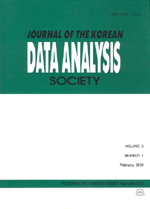ASEAN 선도 3개국의 경기변동요인과 위기 극복 정책
Financial Crisis and Economic Fluctuations in Three ASEAN Countries: Before and After the East Asian Financial Crisis
- 한국자료분석학회
- Journal of The Korean Data Analysis Society (JKDAS)
- Vol.16 No.6
-
2014.123133 - 3148 (16 pages)
- 16

1990년대 이후 ASEAN은 높은 성장률을 기록하여 중남미, 아프리카 및 동유럽 체제전환국들 등 다른 개발도상국들의 경제개발정책에 많은 시사점을 제시하고 있다. 본 논문은 아세안(ASEAN)을 선도하는 인도네시아, 말레이시아, 태국 등 3개국의 경기변동 요인을 GDP, 수출, 물가로 구성된 SVAR 모형을 활용하여 분석한다. 이때 소규모 개방경제의 특징을 반영하기 위해 총공급충격을 로컬충격과 글로벌 충격으로 구분하여 분석한다. 추정결과, 공통적으로 아세안(ASEAN)을 선도하는 3개국의 국내총생산에 공급충격이 중요한 역할을 했음을 알 수 있었고, 공급충격을 세분화하여본 결과 1997-1998년 동아시아 금융위기를 거치면서 말레이시아와 태국에서 글로벌공급 충격이 차지하는 비중이 크게 감소한 반면, 로컬공급 충격의 비중은 크게 상승한 것으로 나타났다. 또한 인도네시아의 경우 비록 동아시아 금융위기를 거치면서 다소 감소하기는 하였지만 글로벌 공급충격이 가장 중요한 충격인 것으로 나타났다. 반면 태국은 위기를 거치면서 총수요충격이 차지하는 비중은 감소하는 가운데 로컬충격이 보다 더 중요해지는 것으로 나타났다. 이러한 현상들은 이들 국가들의 산업구조와 이들이 금융위기를 거치면서 추진한 서로 다른 정책 등의 결과로 해석된다.
Recently, the economic performance of ASEAN suggest important implication to other developing countries in Africa, Latin America and East Europe as academical and political aspects. In this paper, using export amount, gross domestic product (GDP) and consumer price index (CPI) data of leading ASEAN countries (Indonesia, Malaysia and Thailand) for analysis that what factors affect to GDP represented by business cycle and we use structural VAR (SVAR) model for analysis. In this process, supply shocks divided by local and global shock in order to reflect the features of small open economy. As a result, supply shocks do important role in GDP of leading ASEAN 3 countries. Indeed, the impulse response of local supply shocks increased in ASEAN 3 countries. And global supply shocks appeared to be larger than the local supply shocks in Malaysia and Indonesia before currency crisis. Demand shocks increased positive impact in short run after currency crisis.
1. 서론
2. 선행 연구
3. 추정 모형
4. 실증분석 결과 및 해석
5. 결론
References
(0)
(0)